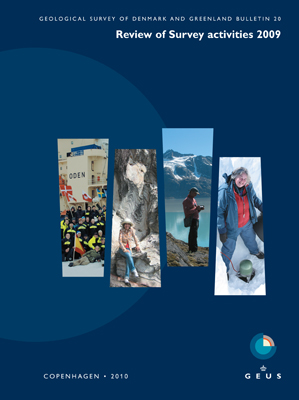
How to Cite
Share
Abstract
Concerns about climate change have led to increased interest in geothermal energy as one way of reducing the consumption of fossil fuels and thus limit CO2 emissions. Use of geothermal energy is based on well-established technologies, a high degree of security of supply, and little visual or noise inconvenience. More than one hundred plants have been established in Europe. There is a large potential for using geothermal energy from the Danish subsurface, as first pointed out by Balling (1976). Geothermal energy is highly suitable for district heating systems and is expected to cover a large part of the demand for district heating in the future. Two Danish geothermal plants, the Thisted plant in northern Jylland and the Margretheholm demonstration plant near Copenhagen (Fig. 1), have shown that it is possible to produce large amounts of warm water for district heating. Only 5–10% of the total energy output from the plant is used to extract the heat from the subsurface by pumping warm formation water to the surface and returning it to the subsurface in a closed system. The plants use absorption warmth pumps, which need steam and hence give rise to consumption of (fossil) fuel. Both Danish plants have two wells, a production well and an injection well in which the cooled formation water is returned to the geological reservoir at about 1 km away from the production point, in order to avoid mixing of warm and cold water (Fig. 2). Geothermal energy can also be used for electricity production, but Danish subsurface tem-peratures are currently not believed to be sufficiently high to produce electricity directly.
How to Cite
Share
Copyright (c) 2010 Anders Mathiesen, Lars Henrik Nielsen, Torben Bidstrup

This work is licensed under a Creative Commons Attribution 4.0 International License.
Downloads
Edited by Ole Bennike, Adam A. Garde and W. Stuart Watt
This Review of Survey activities presents a selection of 23 papers reflecting the wide spectrum of activities of the Geological Survey of Denmark and Greenland, from the microscopic to the plate-tectonic level. In addition, an obituary about the former director of the [...]









